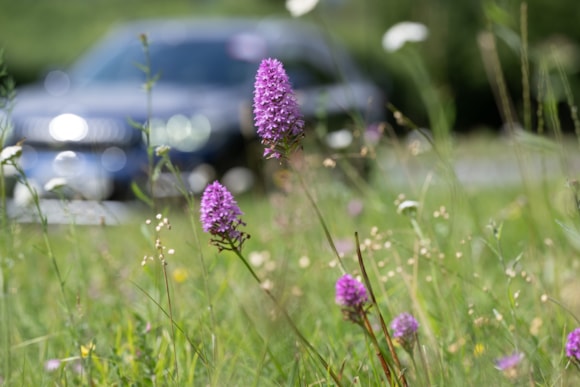Wildflower verges encourage biodiversity and helps wildflowers thrive, leading to greater amounts of carbon being stored in the soil, as well as supporting pollinators such as bees and butterflies
The programme is a key part of TfL’s Green Infrastructure and Biodiversity Plan, which sets out how London’s strategic transport authority will seek to respond to the ecological crisis
Transport for London (TfL) pledged last year to increase biodiversity, mitigate climate change and become more sustainable in its operations by increasing the amount of wildflower verges on roadsides of TfL’s network and has doubled the area managed in this way to more than 260,000m2 in 2024.
The sites are managed to promote biodiversity by reducing mowing frequency to allow wildflowers to grow, TfL continue to regularly mow the edges to keep London’s streets looking well maintained. TfL now has wildflower verges across its network including Gants Hill roundabout in Redbridge, Clockhouse roundabout in Feltham and the A21 Sevenoaks Road (Green Street Green) in Bromley.
The flowers create a supply of nectar and other food resources, plus shelter, for wildlife including bees, butterflies, birds and small mammals. Wildflower verges bring additional benefits for London’s biodiversity, including the transfer of carbon dioxide from the air into the soil and reduced carbon emissions from mowing. The new verges mean that there are now the equivalent of 37 football pitches of wildflower verges across the TfL road network.
The introduction of new wildflower verges formed a key part of TfL’s commitment to enhance biodiversity across its estate. TfL’s Green Infrastructure and Biodiversity Plan, published in March 2024, set out how TfL will protect, connect and enhance its green infrastructure and biodiversity and how it will work with other organisations to tackle this vital issue both now as well as part of longer-term planning.
Lilli Matson, Chief Safety Health and Environment Officer at TfL, said: “We are excited to expand biodiversity in London, making the capital greener and healthier. The new wildflower verges will encourage biodiversity and make London a more liveable and nature-rich city. We will continue to work with our partners to improve our network and reduce impacts of climate change.”
Deputy Mayor for Transport, Seb Dance, said: “I am delighted that TfL have now delivered the equivalent of 37 football pitches of wildflower verges across London’s road network.
“Protecting and encouraging biodiversity is essential to increasing sustainability and mitigating climate change, as we continue working together for a greener, fairer London for everyone.”
TfL has also recently completed work on Tolworth Roundabout, a scheme to help mitigate the impacts of climate change by creating over 6,000 sqm of Sustainable drainable systems (SuDS). TfL’s rapid expansion of SuDS across London has resulted in exceeding TfL’s green scorecard annual target of 5,000 sqm of SuDS each financial year. With the risk of flooding in London increasing year on year, London’s existing network of sewers and drains is at capacity in many areas and the issue is exacerbated by a rapidly increasing population. TfL’s work to create more SuDS in the capital, reduces the risk of flooding and improves London’s river water quality.
PIC-TfL






















